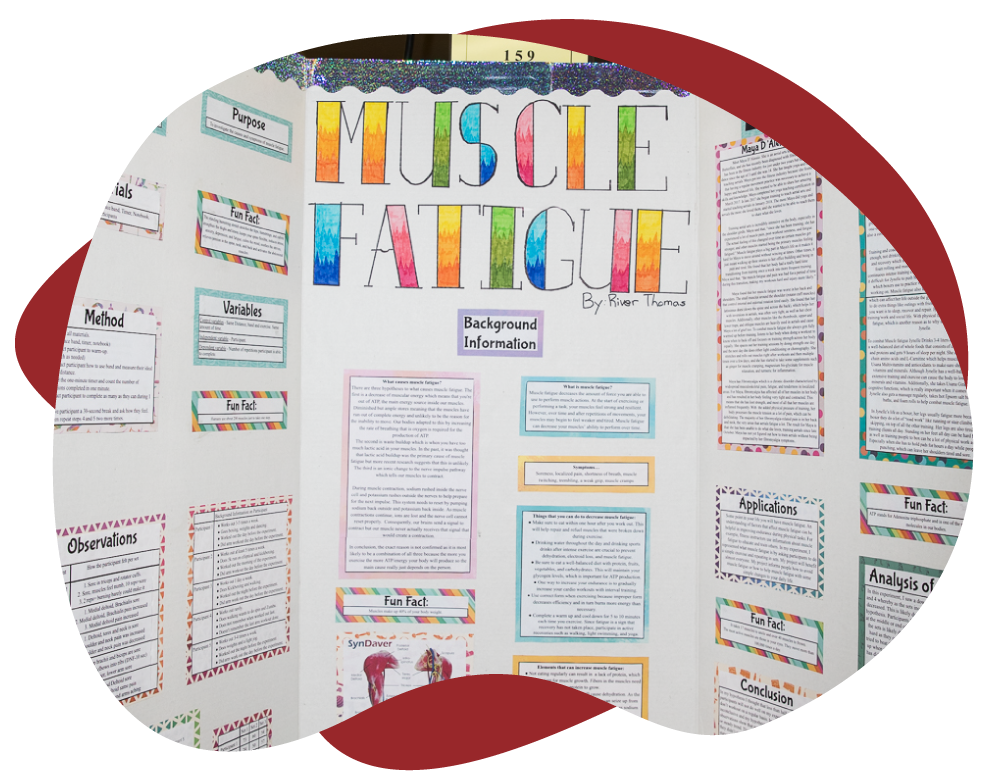Hurry Up, I Need Some Water!
<name> <school>
Background, Purpose, Hypothesis:
Chlorine is one of the best ways to ensure safe drinking water. Chlorine was discovered in 1774 and became the seventeenth element on the periodic table of elements. It was discovered when Carl Scheele mixed pyrolusite, which is a mineral containing manganese dioxide, with muriatic acid. In time, it became widely known for its ability to purify water. When the chlorine first hits the water, it turns into hypochlorous acid and hypochlorite acid, both of which kill disease-causing bacteria and viruses. The acids react with the biomolecules, destroying the cell walls and effectively killing the bacteria in the water. After one puts excessive amounts of chlorine in the water, it is important to let the chlorine dissipate. Dissipation is the process in which the chlorine levels drop, because the excess chlorine has done its job and purified the water. The chlorine leaves the water and is released as a gas. The purpose of this experiment is to discover what increases the rate of dissipation. Variations in water temperature, light levels, and air movement will be tested throughout the experiment. These will be tested by putting four individual water bottles in the refrigerator, on top of a heater, in a cupboard and on a window sill. Two additional water bottles will be tested at room temperature in a typical room, but one will have a lid on it and the other will be kept open. My hypothesis is that all three factors - warmer water, higher light levels and increased air movement--will all increase the rate of chlorine dissipation.
Procedure:
In this experiment, I filled 6 water bottles with 1 liter of water. To each water bottle, I added 30 drops of chlorine and tested the initial chlorine levels. Every 5 minutes for the first hour, I tested the chlorine levels. During the next 30 minutes, I tested the water every 10 minutes. For the remaining 7.5 hours, I tested the water every 30 minutes. For each chlorine test, a sample from the bottle was removed and placed in the test tube. Four drops of OTO were added to the water, turning the water a shade of yellow. The shade of yellow was compared the standardized scale provided with the test kit.
Results and Conclusions:
This experiment proved that hot water significantly speeds up the dissipation rate. As well, I discovered that, when it comes to light levels, no significant change in the dissipation rate was detected. This is likely because the winter sunlight did not heat the water sufficiently; however, it is possible that on a sunny day in July the dissipation rate would increase because of the heat generated by the sun. In addition, I found that the amount of air movement in my test did not affect the dissipation rate. My initial hypothesis was correct in that I predicted that increased water temperature would lead to faster dissipation rates. However, I had predicted that increased light levels and air movement would have a similar effect. My experiment did not, however, show this to be the case.
Acknowledgements:
I would like to thank my parents for bringing me to the store to purchase items that were necessary for the experiment, as well as answering any questions that I had. I would also like to thank my teacher for his support.
Testing for Antibiotic Resistance
<name> <school>
Background and Purpose
The development of antibiotic resistance among pathogenic bacteria is a growing concern in medicine and food production. As antibiotics are used more frequently, bacterial colonies with antibiotic resistance become more prominent. As a result, it is becoming increasingly important to determine how frequently the use of an antibiotic will result in the growth of resistant mutants. As such, this experiment was created with the goal of determining how often certain antibiotics will produce bacterial colonies with resistance to that same antibiotic. The four antibiotics used were: Kanamycin, tetracycline, chloramphenicol, and ampicillin. All four are frequently used in medicine and other industries, and data from the experiment will help to determine which are the most likely to generate resistant bacteria when used in uncontrolled environments, like the human body. This knowledge can be used to limit the propagation of antibiotic-resistant bacterial colonies in the wild.
Procedure
First, four plates of Escherichia coli bacteria were exposed to a low concentration of one antibiotic using paper disks. This was accomplished by growing a lawn of E. coli on each plate, then soaking a disk of filter paper in a diluted antibiotic and placing it on the plate. The plates were then left in an incubator at 37 degrees Celsius for 8 hours to allow growth to occur. Then, colonies were harvested from inside zones of inhibition created by the antibiotic disks. These colonies were then incubated for 8 hours under the same conditions described above. Finally, the harvested colonies were placed in a test tube containing a higher concentration of the antibiotic than they were originally exposed to. Simultaneously, a control group of regular E. coli were exposed to each of the four high concentration antibiotics in the same way. The density of bacteria in each test tube was measured using a spectrometer after 24 hours.
Results and Conclusions
The results of the experiment have not yet been finalized, but the goal is to determine which antibiotics are most likely to produce resistant bacterial colonies. This data will be applicable in medicine, where it is preferable to use antibiotics, which produce fewer resistant colonies so that the antibiotic will remain effective over time. For example, if the resistant bacteria which grow in the inhibition range of tetracycline are shown to be highly resistant to high concentrations of the antibiotic, it would suggest that future use of tetracycline in uncontrolled environments could risk releasing resistant bacteria into the wild.
Acknowledgements
I would like to acknowledge <name> for granting me access to the University of Waterloo Applied Mathematics Biology Lab and its equipment so I could complete the experiment. Thanks also to <teacher> for answering questions and addressing concerns I had while planning the project.
Watch The Algal Bloom!
<name> <school>
Background, Purpose and Hypothesis:
Freshwater algal blooms occur when an increased quantity of algae colonizes a body of water. Last summer I observed green scummy water in a pond near my backyard, and after some research identified this as a bloom. The bloom is caused by excess nutrient runoff such as phosphorus, nitrogen and potassium compounds derived from fertilizers applied on lawns, fields, and gardens. This nutrient pollution causes algae to grow excessively. The purpose of this experiment is to determine if higher concentrations of fertilizer will increase algae growth. The hypothesis is that higher concentrations of nitrogen, phosphorus and potassium compounds will result in increased algae production.
Procedure:
Pond water was collected and categorized into 6 cups by concentration of fertilizer, one of which having no fertilizer. This was achieved by performing a dilution series by dividing each concentration of fertilizer in half. 0.06X, the lowest concentration of fertilizer, had a concentration of fertilizer 32 times smaller than the highest concentration of fertilizer: 1X. The pond water was then tested using a test kit to measure the pH, nitrite, ammonia, and phosphate levels to determine if the pond was suitable for algae growth. The algae was observed each day for fourteen days by recording the appearance of the algae and the pond water, as well as the temperature of the room and the amount of sunlight received each day. The area of the algae was then measured and recorded. This procedure was undergone 3 times.
Results, Conclusions and Applications:
The results of this experiment were that the highest concentration of fertilizer, 1X fertilizer solution, caused the most algae growth. However, the cup without fertilizer had a higher percentage than the three fewest concentrations of fertilizer; as a result, further testing would need to be done such as prolonging the trial lengths and increasing the temperature of the area where the algae grew to produce more reliable results. The results of this experiment could be used by farmers to inform them to not over fertilize their fields which could eventually wash off into bodies of water. Using natural fertilizers would be more effective since they are slow release and they don't filter away from the plants like chemical fertilizers, which would reduce the chance of an algal bloom. People who live near ponds, such as me and my neighbours, would also be informed to use the same advice on their lawns and gardens. Further testing would include determining the correlation between the temperature and algae growth using a scale to ascertain if this is also a cause that augments algae growth.
Acknowledgments:
I would like to thank my parents for funding this project and <teacher> for helping me decide how I would conduct this experiment.
Up, Up and Away
<name> <school>
Background, Purpose and Hypothesis:
Lift is one of the four forces, in addition to weight, thrust and drag, that affect the flight of an airplane. When an airplane takes off, lift is generated by thrust and the movement of air above and below the wings. Weight, on the other hand, opposes the lift and, together with gravity, draws the airplane back toward the earth. For an airplane to fly, there must be enough lift to overcome the weight. The reason I chose this experiment is because I love physics and am fascinated by how airplanes work. The purpose of this experiment is to find out which wing height (9.5mm, 12.7mm, 19.1mm, 25.4mm) can generate the most lift, if all other variables are kept constant. My initial hypothesis is that the 12.7mm wing will generate the most lift, and the 25.4mm wing will generate the least.
Procedure:
For this experiment, a wind tunnel must be constructed out of wood and Plexiglas. In order to do so, four trapezoids must be cut out of wood (Height--24"; Base--21"; Top--9"). These pieces of wood must be secured with L-shaped brackets, forming a cone into which a large fan can be placed. Three pieces of Plexiglas and one wooden base, each measuring 32x10", should be glued together, forming a long, box-shaped tunnel. A weigh scale should be placed in the middle of the wind tunnel. For each of the four wings, pieces of basswood should be cut and sanded to four distinct heights (9.5mm, 12.7mm, 19.1mm and 25.4mm). These wings must be attached to a stand and placed on the weigh scale. The initial weight should be recorded before turning on the fan. The lift created by the movement of air will reduce the actual weight of the wing and will indicate the amount of lift generated. This test should be done for all four wings, and the entire experiment should be conducted four times to establish verified results.
Results, Conclusion and Application:
My hypothesis was only partially correct. It was found that the smallest wing (9.5mm) generated the most lift. The results showed that the 9.5mm wing lost 7.44% of its weight. This was followed closely by the 12.7mm wing, which lost 6.165% of its weight. The 19.1mm wing lost 3.615% of its original weight. Lastly, the 25.4mm wing lost only 3.15% of its weight. The most likely reason that the the results turned out as they did is because the smaller wing was more proportional to the stand and wind tunnel. The larger wings, which had a higher profile and more blunt front end, generated greater impact force, which affected the lift generated. One variable that I could further test is how the wing's pitch affected its lift. This could inform us on how the lift changes when the airplane is taking off compared to when the airplane is in flight. A project like this can help us better understand lift and help us design more efficient wings.
Acknowledgments:
I would like to thank my parents for helping me and encouraging me along the way. I would also like to thank
<teacher> for encouraging me to pursue science and asking difficult questions. He also gave good and knowledgeable advice.
Bacteria in Salmon with Varying Marinades
<name> <school>
Background and Purpose:
In the U.S. over 5,000 people die each year from food poisoning and over 300,000 people are hospitalized. The leading cause of food poisoning is bacteria and pathogens in food sources. Improper cooking methods are one of the causes. While meats are safe to ingest when cooked, raw fish found in popular dishes like sushi are on the rise. The purpose of this experiment was to see if three common food pairings, vinegar, wasabi, and mustard, could lower the risk of bacterial growth in salmon. A control group of salmon with no marinade was used to compare the effectiveness of the marinades. I hypothesize that the salmon samples with marinades will have less bacterial growth than the salmon samples without.
Procedure:
Fresh salmon, which had never been frozen before, was bought from the supermarket, and rinsed with cold water for half a minute. The salmon was sliced into 0.5 cm diameter by 0.2 cm thick, slices. Hereafter, the slices of salmon were divided into four groups, each containing 15 slices. Wasabi and mustard were coated on two groups of salmon specimens in a layer that was approximately 0.25 mm thick. White vinegar was used to completely submerge the third salmon group. The last sample of salmon had no coating, and acted as the control. All four fish samples were left for 24 hours in a 3 degrees Celsius environment. Then, they were lightly rinsed with cold water in a bowl three times each. A swab from each sample was taken and left to grow in a petri dish with an agar-based growth medium at 37 degrees Celsius. After 48 hours, bacterial colonies were counted.
Results, Conclusions, and Applications:
The control group has the most bacterial growth, upwards of 5,000 bacterial colonies. The wasabi and salmon group, and the mustard and salmon group, had similar amounts of bacteria, approximately 70% and 60% of the control group's bacterial growth, respectively. The salmon sample with vinegar had little to no growth in bacteria.
Vinegar, which contains acetic acid, is the most effective at preventing bacterial growth. Mustard, whose main ingredient is vinegar, is the second most effective. Wasabi is the third most effective.
Applying some of the previously mentioned marinades to the fish can reduce the risk of raw fish in sushi and other related dishes. Wasabi and salmon, already a popular combination, can reduce the growth of bacteria by almost a third of the original. Rice vinegar, which is used in the making of sushi rice, can be an additional step in reducing the risks with raw fish. Companies and restaurants can take this information into account when preparing raw fish to reduce the number of people who fall ill due to food poisoning.
Acknowledgements:
I would like to thank <teacher> for valuable advice and for supplying tools and equipment.
Will different fonts and colours impact how well people can recall words?
<name> <school>
Background Information
The colour or font of a word could affect how well it is memorized in two ways. One way is if the colour in which the word is printed is associated with the meaning of the word. For example, if the word “apple”; is printed in red, a person can use that colour to help memorize the word. This is a mnemonic, which is a way to help memorize something. Another way the colour or font can affect how a word is memorized is if either the font or colour is a distraction. In other words, the person may be looking at the colour instead of memorizing the word, making it more difficult to memorize. This may also apply to fonts. Different colours and fonts can also impact readability.
Purpose
The purpose of this experiment is to determine whether different fonts and colours will impact how well people can recall words.
Hypothesis
I hypothesize that words in fancy fonts and in lighter colours will be harder to remember than words in standard fonts and in darker colours.
Materials and Apparatus
The materials used were blank paper, writing utensils, a stopwatch, and willing participants. The devices needed for this project were a computer, a colour printer, and a black and white printer.
Procedure
- Create an informed consent
- Write up a list of 20 simple three-letter
- Make two copies of this list.
- Make the words in copy 1 different fonts, keeping the size at 12point, and the words in copy 2 different colours, using the font Arial
- Ask people to partake in the experiment and have them fill out the informed consent sheet then conduct the test, being careful to give the participants one minute to look at the words and 30 seconds to remember them and to give half of the participants one set of words and the other half, the other set of
- Record observations and
- Create a graph or table to represent the
Results
Font: "Cow" (Permanent Marker font) was the easiest to remember, as 88% of people remembered it. "Cow" was followed by "Wig" (Ultra font) and "Ice" (Gloria Hallelujah font) each at 75%. Colour: As with font, "Cow" (in blue) was easiest to remember, as 75% of people remembered it. "Cow" was followed by "Lie" (in red) at 63%.
Conclusion
As I hypothesized, most of the words in fancier fonts and in lighter colours were harder to remember while words in simpler fonts and darker colours were easier to remember. However, most participants did not remember the word in Times New Roman, which is a standard font. Only about half of the participants remembered the word in Arial, which is the font most used in school. Also unlike my hypothesis, only one participant remembered the word in black. Some participants remembered the colours the words were in, rather than the words themselves. Some variables are: whether the word has an emotional attachment, whether the participant was distracted, and whether the word was studied more than the other words. The applications of this project are that if you want people to remember text, use a legible font and do not use light colours.
Acknowledgments
I would like to thank my parents for helping me create the graphs and tables, the participants in this experiment, and my teacher for helping me get started with my project.






